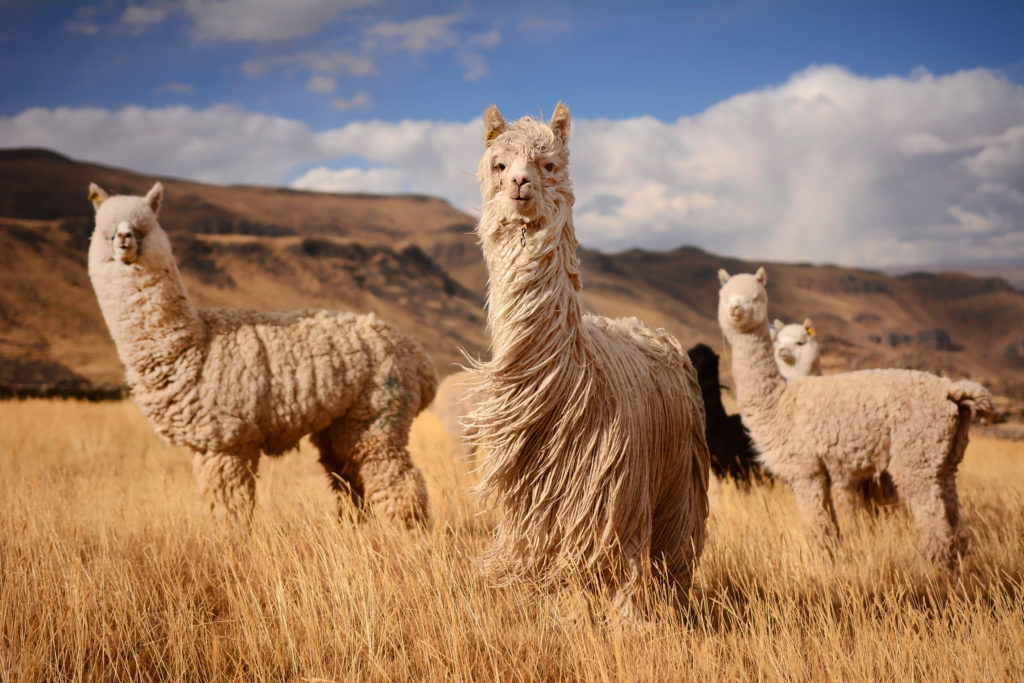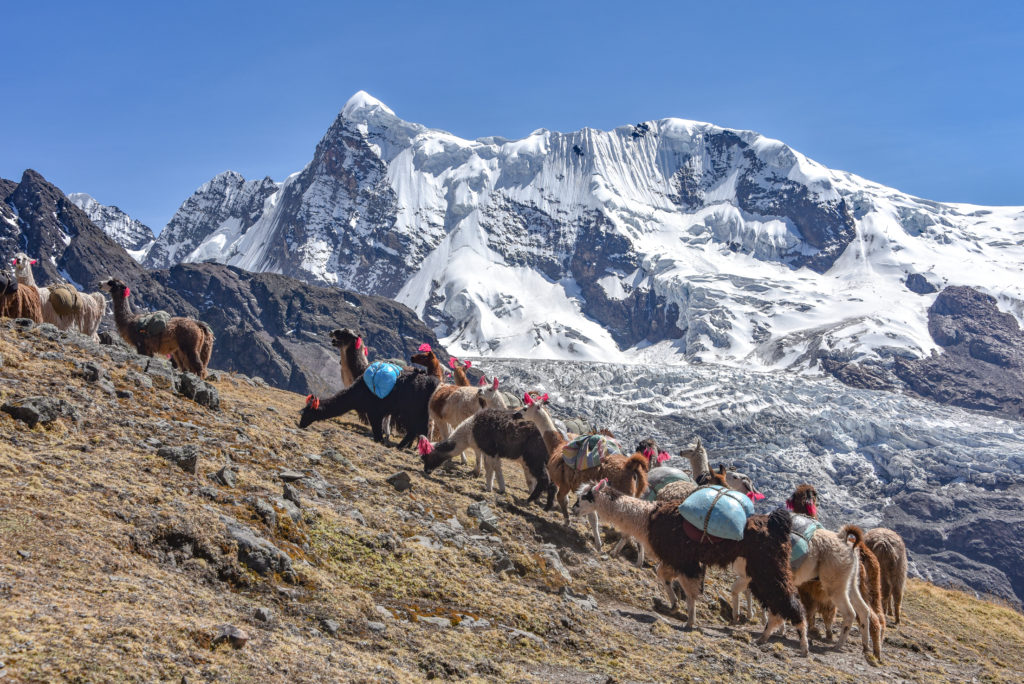BABY ALPACA FIBER
The Alpaca. Living between 3,000 and 4,500 meters above sea level in the Andes Cordilleras, these animals have an inordinate capacity to cope with climatic variations of up to 30 degrees between day and night. Bred by the Incas, and considered the animal of the gods, there are two types : the Huacaya and the Suri.
The Suri has an atypical appearance as their fur hangs down to form the long dreadlocks. Their wool is shinier, wavier and above all, rarer than the huacaya’s. The Huacaya’s fur has the appearance of a voluminous-looking fibere.
The incas highly valued and esteemed alpaca fiber. They considered their fiber as “the fiber of the gods” which were only reserved for the emperor and nobility. It was not only a symbol of wealth but of power as well.
Today, 93% of alpaca fiber on the market is Huacaya’s fibere because it is the most widespread as they represent 98% of alpacas worldwide population.


Alpaca fiber. Shearing and fiber harvesting take place once a year. In fact, when spring arrives and the first heat approaches, the alpaca is sheared, giving the fiber time to grow back and renew itself for the next season.
Alpaca fiber is the finest wool in existence, measuring around 16 to 25 micrometers in diameter which makes it feel light and warm throughout the seasons.
One of the special features of alpaca is the wide variety of natural colors it comes in. As a matter of fact, there are no fewer than 22 colors to choose from, ranging from white and black to gray and brown.
Finally, this very rare fiber: there are 1,000 times fewer alpacas in the world than sheep. Moreover, baby alpacas account for only 10% of each shearing, and royal alpacas for only 1%. Baby alpaca fiber refers to a one-year-old alpaca and is related to the thickness of the fiber. Located underside of the animal’s neck, it is extremely soft and is considered a luxurious fiber.
Its features. Alpaca fiber is well known for its following excellent attributes :
- Hygroscopic meaning it absorbs ambient moisture very slowly
- No pilling
- Does not retain odors or dust
- Protects against dust mites
- Non-flammable because does not retain combustion and resists molten particle projections
- Durable because alpaca fiber structure is more durable for garment manufacture
- Resistant thanks to the high elasticity of the fiber
crazy anecdote, thanks to its exceptional properties the NASA decided to choose alpaca fiber to clothe its cosmonauts on the Apollo 11 mission. Indeed, the alpaca fiber ticked all the boxes of what they needed which were light, thermoregulating, warm and suitable for all skin types.


An eco-friendly fiber. Alpacas are considered “ecological animals”, because they do not pollute or uproot vegetation.
Moreover, they do not damage their pastures, as their feet have no hoofs, but rather nails with small cushion, enabling them to enjoy their food in abundance all year round, without interruption or adding any chemicals.
Furthermore, when they eat, they do not uproot the grasses they consume, which means they do not alter the surrounding biodiversity. Alpaca fiber requieres no chemical treatment for weaving, and the diversity of hues offered by this animal is so vast that, in most cases, no dyes are added to the fiber which means that it remains biodegrable.
Finally, thanks to the quantity of fiber per alpaca, one single alpaca can produce 4 times more than a single sheep.

